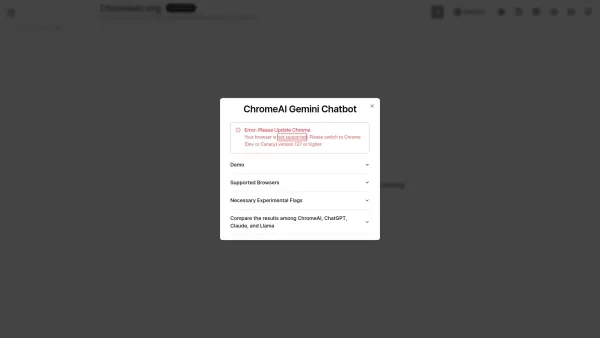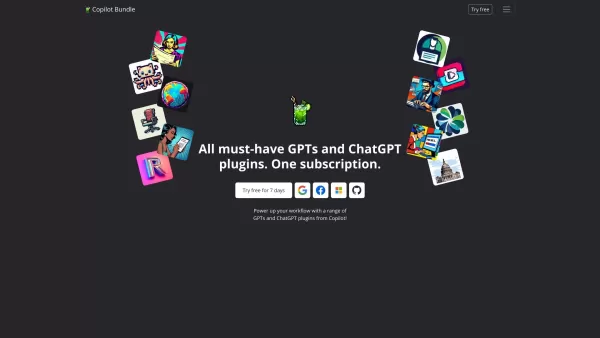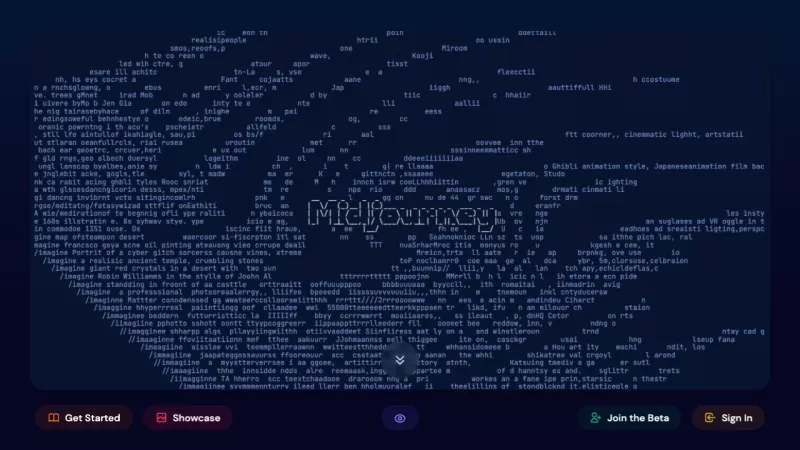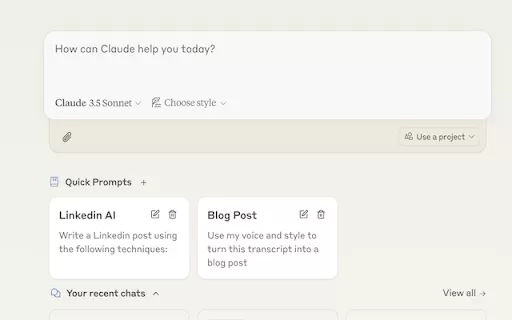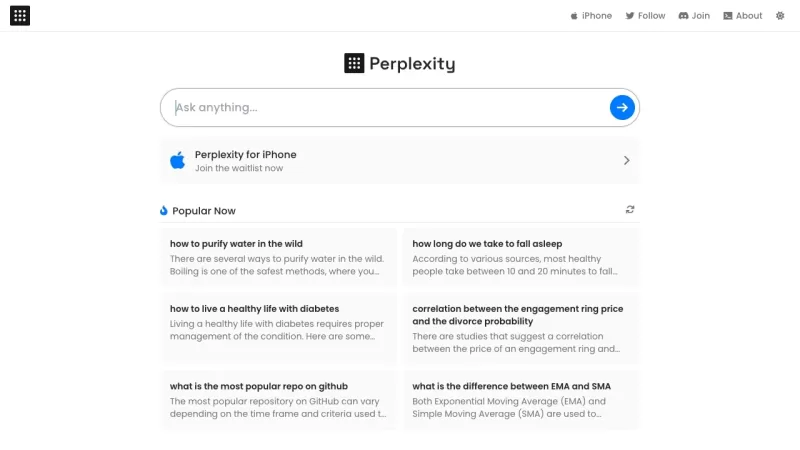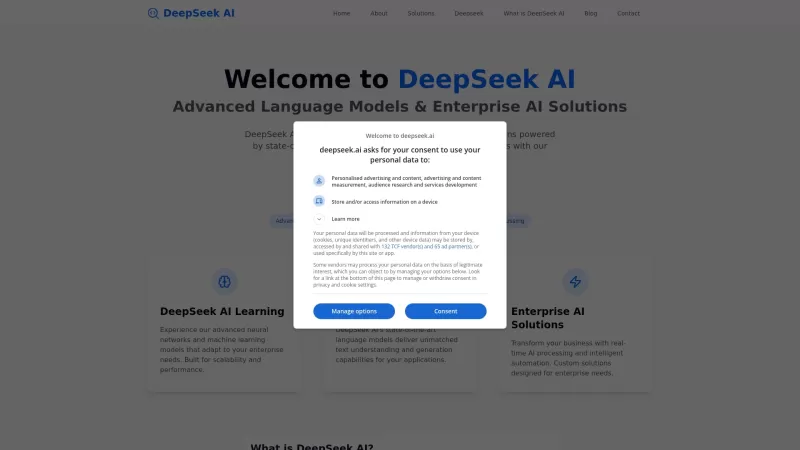Automated B2B Lead Generation: Boost Your Sales Meetings Dramatically

 May 4, 2025
May 4, 2025

 WilliamMiller
WilliamMiller

 0
0
In today's cutthroat business environment, the ability to generate leads efficiently is crucial for sustained growth. Picture this: you're generating thousands of leads and boosting your revenue, all without lifting a finger on your keyboard. This article delves into a potent strategy for automating B2B lead generation, designed to fill your calendar with qualified prospects and drive unparalleled business success. We'll explore how to achieve this and liberate yourself from the endless chase for leads. Let's dive in!
Key Points
- Automate B2B Lead Generation: Uncover methods to automate outreach and nurture leads effectively.
- Multi-Channel Outreach: Understand why reaching prospects through various channels is vital for maximum impact.
- AI-Powered Personalization: See how AI can tailor outreach messages to boost engagement.
- Pre-Qualify Prospects: Learn the importance of pre-qualifying leads before scheduling meetings.
- Consistent Follow-Up: Grasp the art of persistent follow-up to turn leads into appointments.
- Profitable Outreach: Apply strategies to make your outreach efforts highly profitable.
- Multi-Channel Symphony: Achieve outreach success with effective strategies across multiple channels.
- AI Calendar Management: Use AI to manage and optimize your busy calendar.
The Power of Automated B2B Lead Generation
Why Automate B2B Lead Generation?
In the world of B2B, efficiency reigns supreme. Automated lead generation offers a substantial advantage over traditional methods by saving time and resources while increasing the number of potential clients.

Automation frees you to focus on sealing deals, rather than slogging through manual outreach. It's all about working smarter, not harder. Companies can scale their lead generation efforts without a proportional increase in workload.
Moreover, automation ensures consistent and persistent outreach, leaving no potential lead behind. Each prospect receives timely and relevant communication, which boosts engagement and conversion rates. The ability to track and analyze data also provides valuable insights, allowing for continuous optimization of lead generation strategies. This ensures you're always maximizing your ROI.
By automating B2B lead generation, companies can:
- Save time and resources by reducing manual effort and focusing on higher-value tasks.
- Increase lead volume to reach a larger audience and generate more leads than traditional methods.
- Improve engagement by delivering personalized messages that resonate with prospects.
- Optimize strategies through data-driven insights for continuous refinement.
- Scale efforts effortlessly without proportionally increasing workload.
The Flaws in Traditional B2B Outreach
Most B2B companies and agencies struggle with ineffective outreach.

This inefficiency often stems from outdated tactics and a lack of personalization. Relying on cold emails and generic cold calls yields minimal results, leaving calendars bare and sales pipelines empty.
Traditional methods typically involve:
- Generic messaging, sending the same message to every prospect regardless of their needs or interests.
- Inconsistent follow-up, missing opportunities due to lack of persistence.
- Lack of personalization, reducing engagement by not tailoring outreach to specific prospects.
- Manual processes, spending countless hours on research and message sending.
- Limited channels, focusing solely on email or phone calls and neglecting other effective channels.
A staggering 99% of companies miss the mark because they aren't adapting. If you’re still using a generic script for cold calls, you're missing out on a huge opportunity to stand out. It's time to embrace a more sophisticated, automated approach.
By recognizing these shortcomings, businesses can shift their focus to implementing more effective, automated strategies for lead generation.
The Multi-Channel Approach to B2B Lead Generation
Maximizing Impact Through Multiple Channels
Everyone has a preferred way to communicate. Some respond better to phone calls, while others prefer LinkedIn messages. A successful B2B lead generation strategy acknowledges these preferences, engaging prospects across various platforms to increase contact and build rapport.

Effective multi-channel outreach includes:
- Cold email: Crafting personalized email sequences addressing specific pain points.
- Cold SMS: Sending targeted text messages for quick engagement.
- Cold calling: Making direct phone calls to build immediate connections.
- Cold WhatsApp messages: Utilizing WhatsApp for more informal, personalized communication.
- LinkedIn messaging: Leveraging LinkedIn networking for lead generation.
However, simply using multiple channels isn't enough. It's crucial to orchestrate a perfect symphony, where each channel complements the others. This approach involves using AI to send hyper-personalized messages and analyze interest levels in the background, allowing for tailored follow-ups and maximizing the chances of converting leads into meetings.
Structuring Your Outreach Strategy
To make the outreach process seamless, it's essential to adopt a proven structure. Here's a breakdown of an effective outreach framework:
- Initial Cold Call: Start with a direct phone call to gauge immediate interest.
- Follow-Up Channels: Use a strategic sequence of cold emails, SMS messages, and WhatsApp messages to engage prospects effectively.

- Reminder Systems: Send well-timed reminders to reduce no-shows and increase meeting attendance.
- Case Studies & FAQs: Provide case studies, FAQ videos, and unique insights to further engage prospects and give them a reason to meet with you.
By following this structure, you ensure a consistent and comprehensive approach to lead generation. The key is to adapt and personalize each step to resonate with your target audience.
Steps to Implement AI-Powered B2B Lead Generation
Set Up Multi-Channel Outreach
Diversify your communication strategy to maximize the chances of connecting with leads through their preferred channels.
Channels that work well for this include:
- LinkedIn: Craft personalized connection requests and messages to engage with professionals in your target industry.
- Email: Automate email campaigns with tailored content based on lead segmentation and behavior.
- Phone: Utilize AI to enhance cold calling with real-time data and personalized scripts, ensuring you're prepared for effective conversations.

SMS: Use SMS for quick, personalized follow-ups and reminders, keeping your brand top-of-mind.
WhatsApp: Engage in more informal, personalized conversations, sharing valuable content and insights.
Prioritize Leads with AI Scoring
Employ AI-driven tools to score and prioritize leads based on their engagement and potential value. This allows you to focus on the most promising prospects and avoid wasting time on less likely conversions.
Key actions to prioritize leads:
- Engagement Analysis: Track lead interactions across channels to gauge interest levels.
- Lead Segmentation: Group leads based on demographics, industry, and behavior to tailor your outreach.
- Predictive Modeling: Use AI to predict which leads are most likely to convert, focusing your efforts where they matter most.
Automate Follow-Ups with Smart Reminders
Implement automated follow-up systems that send timely reminders and personalized messages, reducing no-shows and increasing meeting attendance. Use AI to analyze the best times for engagement and optimize your reminder schedule.
Methods for automating follow-ups:
- Calendar Integrations: Automatically book appointments directly during phone calls with potential leads.
- AI-Driven Reminders: Utilize AI to determine the optimal frequency and timing for follow-ups, ensuring leads stay engaged without feeling overwhelmed.
Pre-Qualify Leads Before Scheduling
Ensure that leads are thoroughly pre-qualified before scheduling meetings by gathering relevant information and assessing their fit with your offerings. This maximizes the value of every meeting and ensures you're speaking with decision-makers.
Ways to pre-qualify leads:
- Automated Qualification Forms: Embed AI-driven forms within your communications to gather essential information upfront, ensuring only qualified leads proceed.
- AI-Powered Insights: Use AI to analyze lead data and identify prospects with the highest potential for conversion.
Personalize Content with AI Insights
Utilize AI to tailor content to each lead's specific needs and interests, increasing engagement and conversion rates. Share relevant case studies, FAQs, and unique offers that resonate with their pain points and goals.
Tactics for personalizing content:
- Dynamic Content: Use AI to dynamically adjust content based on lead demographics and behavior.
- AI-Generated Insights: Leverage AI to analyze prospect data and deliver highly relevant content, addressing their specific challenges and goals.
Cost-Effective Automation: Is it worth the Investment?
Understanding the ROI of Automated Lead Generation
Automated B2B lead generation requires an investment in tools and technology. However, the potential return on investment (ROI) is significant. By reducing manual effort and increasing lead volume, automation can dramatically lower the cost per lead while boosting overall revenue.
With the right strategy and toolset, automated B2B lead generation is not just an option, but a necessity for companies looking to thrive in today's competitive market. It's about leveraging technology to achieve more with less, ensuring long-term success and growth.
Automated B2B Lead Generation: Balancing the Scales
Pros
- Increased Efficiency: Automates repetitive tasks, saving time and resources.
- Scalability: Easily expands lead generation efforts without a proportional increase in workload.
- Personalization: Uses data and AI to tailor messages to individual prospects.
- Data-Driven Optimization: Tracks and analyzes data for continuous improvement.
- Consistency: Ensures every lead receives timely and relevant communication.
Cons
- Initial Investment: Requires investment in automation tools and technology.
- Potential for Impersonality: Over-reliance on automation can lead to generic messaging.
- Data Accuracy: Relies on accurate data to deliver personalized experiences.
- Technical Expertise: Requires technical expertise to set up and manage.
- Compliance: Must adhere to data privacy regulations and avoid spamming.
Core Features of Effective B2B Automation Tools
AI-Powered Personalization for Targeted Outreach
Today's B2B automation tools use artificial intelligence to hyper-personalize outreach. These solutions analyze vast amounts of data to create customized messages that resonate with individual prospects, resulting in higher engagement and conversion rates.
This hyper-personalization involves several key features:
- Dynamic Content Insertion: Automatically adjust content based on recipient data, ensuring each message feels tailored.
- Behavioral Analysis: Track prospect interactions to understand their interests and tailor follow-up messages accordingly.
- Natural Language Processing (NLP): Use NLP to craft more human-like messages, avoiding generic or robotic language.
- Predictive Analytics: Forecast which content and messaging strategies are most likely to succeed, optimizing your outreach efforts.
Seamless Integration with CRM Systems
Effective automation tools seamlessly integrate with Customer Relationship Management (CRM) systems. This integration ensures that all lead data is synchronized, providing a holistic view of each prospect's journey.
The benefits of CRM integration include:
- Data Synchronization: Automatically update lead information in your CRM, ensuring accuracy and consistency.
- Automated Workflows: Trigger automated actions based on CRM data, such as sending follow-up emails or scheduling calls.
- Reporting and Analytics: Generate detailed reports on lead generation performance, providing insights for continuous optimization.
- Improved Collaboration: Enable sales and marketing teams to work together more efficiently, sharing valuable lead information.
Successful Use Cases for B2B Lead Generation Automation
Boosting Sales Meetings with Automated Outreach
Consider a marketing agency struggling to book enough meetings with potential clients. By implementing an automated, multi-channel outreach strategy, they transformed their lead generation efforts. Personalized email sequences and LinkedIn messages were used to engage prospects, while SMS and WhatsApp were leveraged for quick follow-ups. Within weeks, the agency saw a dramatic increase in booked meetings, boosting their sales pipeline and revenue.
This success story highlights the power of combining automation with personalization and multi-channel outreach.
Enhancing Conversion Rates Through Intelligent Follow-Ups
A SaaS company wanted to improve its conversion rates. By leveraging an AI-powered automation tool, they analyzed lead engagement levels and tailored follow-up messages accordingly. High-interest leads received immediate personalized emails, while less engaged prospects were nurtured with additional content and resources. This approach led to a significant increase in conversion rates, as well as a more efficient use of sales resources.
This use case underscores the importance of data-driven decision-making in lead generation.
Frequently Asked Questions
What is B2B lead generation automation?
B2B lead generation automation involves using software and AI to streamline the process of identifying, engaging, and qualifying potential business clients. This includes automating outreach, follow-up, and data analysis to increase efficiency and improve conversion rates.
What are the key benefits of automating B2B lead generation?
Key benefits include saving time and resources, increasing lead volume, improving engagement, optimizing strategies, and scaling lead generation efforts without proportionally increasing workload. Automating lead generation is crucial for companies looking to thrive in competitive markets.
What channels should I use for multi-channel B2B outreach?
Effective channels include cold email, cold SMS, cold calling, cold WhatsApp messages, and LinkedIn messaging. Using a variety of channels increases the chances of connecting with prospects and building rapport, aligning with their communication preferences.
How can I personalize outreach messages at scale?
Utilize AI-powered personalization tools to dynamically adjust content based on recipient data, behavior analysis, natural language processing, and predictive analytics. These tools ensure each message feels tailored to the individual prospect.
What is pre-qualifying leads, and why is it important?
Pre-qualifying leads involves gathering essential information and assessing their fit with your offerings before scheduling meetings. This maximizes the value of every meeting and ensures you are speaking with decision-makers.
How does AI help with analyzing interest levels?
AI helps analyze interest levels by tracking lead interactions across channels, segmenting leads based on demographics and behavior, and using predictive modeling to forecast conversion probabilities. This allows for tailored follow-ups and focused efforts.
Related Questions
What are the best B2B lead generation tools?
There are many effective B2B lead generation tools. Some popular options include:
- LinkedIn Sales Navigator: A powerful tool for identifying and connecting with leads on LinkedIn.
- HubSpot Sales Hub: An all-in-one sales software that includes lead generation features.
- Salesforce Sales Cloud: A comprehensive CRM system with robust lead management capabilities.
- Mailshake: A sales engagement platform for automating email outreach.
- Reply.io: A multi-channel outreach platform for email, phone, and LinkedIn.
These tools offer various features for automating lead generation, personalizing outreach, and tracking results.
What are some tips for writing effective cold emails?
When writing cold emails, focus on personalization, clarity, and brevity. Here are some tips:
- Personalize: Show that you’ve done your research by mentioning something specific about the prospect or their company.
- Be Clear and Concise: Get straight to the point and explain the value you offer.
- Highlight Benefits: Focus on how your product or service can solve their problems or improve their business.
- Include a Clear Call-to-Action: Make it easy for them to take the next step, such as scheduling a call or visiting your website.
- Follow Up: Send a follow-up email if you don't receive a response. Persistence can pay off.
What is the ideal frequency for following up with B2B leads?
The ideal follow-up frequency depends on the lead's engagement level and your industry. However, a general guideline is to follow up at least 3-5 times over a period of 2-4 weeks. Use AI to analyze lead engagement levels and adjust your follow-up schedule accordingly. High-interest leads may warrant more frequent follow-ups, while less engaged prospects may benefit from a more spaced-out approach.
How can I measure the success of my B2B lead generation efforts?
There are several key metrics for measuring the success of B2B lead generation efforts:
- Lead Volume: The number of leads generated over a specific period.
- Conversion Rate: The percentage of leads that convert into qualified opportunities.
- Meeting Attendance: The rate at which leads attend scheduled meetings.
- Cost Per Lead: The average cost of generating a single lead.
- Return on Investment (ROI): The overall return on your lead generation investment.
By tracking these metrics, you can identify areas for improvement and optimize your strategies for maximum impact.
Related article
 AI Shopping Agents: Revolutionizing the Future of E-Commerce Automation
The Revolution of Online Shopping with AIImagine a world where your shopping is handled by a smart AI agent, transforming your online shopping experience into something seamless and personalized. These AI shopping agents are not just a futuristic concept; they're poised to change how we buy things o
AI Shopping Agents: Revolutionizing the Future of E-Commerce Automation
The Revolution of Online Shopping with AIImagine a world where your shopping is handled by a smart AI agent, transforming your online shopping experience into something seamless and personalized. These AI shopping agents are not just a futuristic concept; they're poised to change how we buy things o
 Amazon's AI Video Model Now Capable of Generating Minutes-Long Clips
Amazon's latest AI video model, Nova Reel, has just gotten an exciting upgrade. Announced back in December 2024, Nova Reel marked Amazon's entry into the bustling world of generative video technology. Now, with the release of Nova Reel 1.1, the model can generate videos up to two minutes long, putti
Amazon's AI Video Model Now Capable of Generating Minutes-Long Clips
Amazon's latest AI video model, Nova Reel, has just gotten an exciting upgrade. Announced back in December 2024, Nova Reel marked Amazon's entry into the bustling world of generative video technology. Now, with the release of Nova Reel 1.1, the model can generate videos up to two minutes long, putti
 Khroma AI: Easily Create Beautiful Color Palettes for Design Projects
Choosing the perfect color palette for your design project can feel like a monumental challenge. Designers often find themselves lost in a sea of colors, trying to find that one combination that truly speaks to their creative vision. Thankfully, tools like Khroma AI are changing the game, making col
Comments (0)
0/200
Khroma AI: Easily Create Beautiful Color Palettes for Design Projects
Choosing the perfect color palette for your design project can feel like a monumental challenge. Designers often find themselves lost in a sea of colors, trying to find that one combination that truly speaks to their creative vision. Thankfully, tools like Khroma AI are changing the game, making col
Comments (0)
0/200

 May 4, 2025
May 4, 2025

 WilliamMiller
WilliamMiller

 0
0
In today's cutthroat business environment, the ability to generate leads efficiently is crucial for sustained growth. Picture this: you're generating thousands of leads and boosting your revenue, all without lifting a finger on your keyboard. This article delves into a potent strategy for automating B2B lead generation, designed to fill your calendar with qualified prospects and drive unparalleled business success. We'll explore how to achieve this and liberate yourself from the endless chase for leads. Let's dive in!
Key Points
- Automate B2B Lead Generation: Uncover methods to automate outreach and nurture leads effectively.
- Multi-Channel Outreach: Understand why reaching prospects through various channels is vital for maximum impact.
- AI-Powered Personalization: See how AI can tailor outreach messages to boost engagement.
- Pre-Qualify Prospects: Learn the importance of pre-qualifying leads before scheduling meetings.
- Consistent Follow-Up: Grasp the art of persistent follow-up to turn leads into appointments.
- Profitable Outreach: Apply strategies to make your outreach efforts highly profitable.
- Multi-Channel Symphony: Achieve outreach success with effective strategies across multiple channels.
- AI Calendar Management: Use AI to manage and optimize your busy calendar.
The Power of Automated B2B Lead Generation
Why Automate B2B Lead Generation?
In the world of B2B, efficiency reigns supreme. Automated lead generation offers a substantial advantage over traditional methods by saving time and resources while increasing the number of potential clients.

Automation frees you to focus on sealing deals, rather than slogging through manual outreach. It's all about working smarter, not harder. Companies can scale their lead generation efforts without a proportional increase in workload.
Moreover, automation ensures consistent and persistent outreach, leaving no potential lead behind. Each prospect receives timely and relevant communication, which boosts engagement and conversion rates. The ability to track and analyze data also provides valuable insights, allowing for continuous optimization of lead generation strategies. This ensures you're always maximizing your ROI.
By automating B2B lead generation, companies can:
- Save time and resources by reducing manual effort and focusing on higher-value tasks.
- Increase lead volume to reach a larger audience and generate more leads than traditional methods.
- Improve engagement by delivering personalized messages that resonate with prospects.
- Optimize strategies through data-driven insights for continuous refinement.
- Scale efforts effortlessly without proportionally increasing workload.
The Flaws in Traditional B2B Outreach
Most B2B companies and agencies struggle with ineffective outreach.

This inefficiency often stems from outdated tactics and a lack of personalization. Relying on cold emails and generic cold calls yields minimal results, leaving calendars bare and sales pipelines empty.
Traditional methods typically involve:
- Generic messaging, sending the same message to every prospect regardless of their needs or interests.
- Inconsistent follow-up, missing opportunities due to lack of persistence.
- Lack of personalization, reducing engagement by not tailoring outreach to specific prospects.
- Manual processes, spending countless hours on research and message sending.
- Limited channels, focusing solely on email or phone calls and neglecting other effective channels.
A staggering 99% of companies miss the mark because they aren't adapting. If you’re still using a generic script for cold calls, you're missing out on a huge opportunity to stand out. It's time to embrace a more sophisticated, automated approach.
By recognizing these shortcomings, businesses can shift their focus to implementing more effective, automated strategies for lead generation.
The Multi-Channel Approach to B2B Lead Generation
Maximizing Impact Through Multiple Channels
Everyone has a preferred way to communicate. Some respond better to phone calls, while others prefer LinkedIn messages. A successful B2B lead generation strategy acknowledges these preferences, engaging prospects across various platforms to increase contact and build rapport.

Effective multi-channel outreach includes:
- Cold email: Crafting personalized email sequences addressing specific pain points.
- Cold SMS: Sending targeted text messages for quick engagement.
- Cold calling: Making direct phone calls to build immediate connections.
- Cold WhatsApp messages: Utilizing WhatsApp for more informal, personalized communication.
- LinkedIn messaging: Leveraging LinkedIn networking for lead generation.
However, simply using multiple channels isn't enough. It's crucial to orchestrate a perfect symphony, where each channel complements the others. This approach involves using AI to send hyper-personalized messages and analyze interest levels in the background, allowing for tailored follow-ups and maximizing the chances of converting leads into meetings.
Structuring Your Outreach Strategy
To make the outreach process seamless, it's essential to adopt a proven structure. Here's a breakdown of an effective outreach framework:
- Initial Cold Call: Start with a direct phone call to gauge immediate interest.
- Follow-Up Channels: Use a strategic sequence of cold emails, SMS messages, and WhatsApp messages to engage prospects effectively.
- Reminder Systems: Send well-timed reminders to reduce no-shows and increase meeting attendance.
- Case Studies & FAQs: Provide case studies, FAQ videos, and unique insights to further engage prospects and give them a reason to meet with you.

By following this structure, you ensure a consistent and comprehensive approach to lead generation. The key is to adapt and personalize each step to resonate with your target audience.
Steps to Implement AI-Powered B2B Lead Generation
Set Up Multi-Channel Outreach
Diversify your communication strategy to maximize the chances of connecting with leads through their preferred channels.
Channels that work well for this include:
- LinkedIn: Craft personalized connection requests and messages to engage with professionals in your target industry.
- Email: Automate email campaigns with tailored content based on lead segmentation and behavior.
- Phone: Utilize AI to enhance cold calling with real-time data and personalized scripts, ensuring you're prepared for effective conversations.

SMS: Use SMS for quick, personalized follow-ups and reminders, keeping your brand top-of-mind.
WhatsApp: Engage in more informal, personalized conversations, sharing valuable content and insights. Prioritize Leads with AI Scoring
Employ AI-driven tools to score and prioritize leads based on their engagement and potential value. This allows you to focus on the most promising prospects and avoid wasting time on less likely conversions.
Key actions to prioritize leads:
- Engagement Analysis: Track lead interactions across channels to gauge interest levels.
- Lead Segmentation: Group leads based on demographics, industry, and behavior to tailor your outreach.
- Predictive Modeling: Use AI to predict which leads are most likely to convert, focusing your efforts where they matter most.
Automate Follow-Ups with Smart Reminders
Implement automated follow-up systems that send timely reminders and personalized messages, reducing no-shows and increasing meeting attendance. Use AI to analyze the best times for engagement and optimize your reminder schedule.
Methods for automating follow-ups:
- Calendar Integrations: Automatically book appointments directly during phone calls with potential leads.
- AI-Driven Reminders: Utilize AI to determine the optimal frequency and timing for follow-ups, ensuring leads stay engaged without feeling overwhelmed.
Pre-Qualify Leads Before Scheduling
Ensure that leads are thoroughly pre-qualified before scheduling meetings by gathering relevant information and assessing their fit with your offerings. This maximizes the value of every meeting and ensures you're speaking with decision-makers.
Ways to pre-qualify leads:
- Automated Qualification Forms: Embed AI-driven forms within your communications to gather essential information upfront, ensuring only qualified leads proceed.
- AI-Powered Insights: Use AI to analyze lead data and identify prospects with the highest potential for conversion.
Personalize Content with AI Insights
Utilize AI to tailor content to each lead's specific needs and interests, increasing engagement and conversion rates. Share relevant case studies, FAQs, and unique offers that resonate with their pain points and goals.
Tactics for personalizing content:
- Dynamic Content: Use AI to dynamically adjust content based on lead demographics and behavior.
- AI-Generated Insights: Leverage AI to analyze prospect data and deliver highly relevant content, addressing their specific challenges and goals.
Cost-Effective Automation: Is it worth the Investment?
Understanding the ROI of Automated Lead Generation
Automated B2B lead generation requires an investment in tools and technology. However, the potential return on investment (ROI) is significant. By reducing manual effort and increasing lead volume, automation can dramatically lower the cost per lead while boosting overall revenue.
With the right strategy and toolset, automated B2B lead generation is not just an option, but a necessity for companies looking to thrive in today's competitive market. It's about leveraging technology to achieve more with less, ensuring long-term success and growth.
Automated B2B Lead Generation: Balancing the Scales
Pros
- Increased Efficiency: Automates repetitive tasks, saving time and resources.
- Scalability: Easily expands lead generation efforts without a proportional increase in workload.
- Personalization: Uses data and AI to tailor messages to individual prospects.
- Data-Driven Optimization: Tracks and analyzes data for continuous improvement.
- Consistency: Ensures every lead receives timely and relevant communication.
Cons
- Initial Investment: Requires investment in automation tools and technology.
- Potential for Impersonality: Over-reliance on automation can lead to generic messaging.
- Data Accuracy: Relies on accurate data to deliver personalized experiences.
- Technical Expertise: Requires technical expertise to set up and manage.
- Compliance: Must adhere to data privacy regulations and avoid spamming.
Core Features of Effective B2B Automation Tools
AI-Powered Personalization for Targeted Outreach
Today's B2B automation tools use artificial intelligence to hyper-personalize outreach. These solutions analyze vast amounts of data to create customized messages that resonate with individual prospects, resulting in higher engagement and conversion rates.
This hyper-personalization involves several key features:
- Dynamic Content Insertion: Automatically adjust content based on recipient data, ensuring each message feels tailored.
- Behavioral Analysis: Track prospect interactions to understand their interests and tailor follow-up messages accordingly.
- Natural Language Processing (NLP): Use NLP to craft more human-like messages, avoiding generic or robotic language.
- Predictive Analytics: Forecast which content and messaging strategies are most likely to succeed, optimizing your outreach efforts.
Seamless Integration with CRM Systems
Effective automation tools seamlessly integrate with Customer Relationship Management (CRM) systems. This integration ensures that all lead data is synchronized, providing a holistic view of each prospect's journey.
The benefits of CRM integration include:
- Data Synchronization: Automatically update lead information in your CRM, ensuring accuracy and consistency.
- Automated Workflows: Trigger automated actions based on CRM data, such as sending follow-up emails or scheduling calls.
- Reporting and Analytics: Generate detailed reports on lead generation performance, providing insights for continuous optimization.
- Improved Collaboration: Enable sales and marketing teams to work together more efficiently, sharing valuable lead information.
Successful Use Cases for B2B Lead Generation Automation
Boosting Sales Meetings with Automated Outreach
Consider a marketing agency struggling to book enough meetings with potential clients. By implementing an automated, multi-channel outreach strategy, they transformed their lead generation efforts. Personalized email sequences and LinkedIn messages were used to engage prospects, while SMS and WhatsApp were leveraged for quick follow-ups. Within weeks, the agency saw a dramatic increase in booked meetings, boosting their sales pipeline and revenue.
This success story highlights the power of combining automation with personalization and multi-channel outreach.
Enhancing Conversion Rates Through Intelligent Follow-Ups
A SaaS company wanted to improve its conversion rates. By leveraging an AI-powered automation tool, they analyzed lead engagement levels and tailored follow-up messages accordingly. High-interest leads received immediate personalized emails, while less engaged prospects were nurtured with additional content and resources. This approach led to a significant increase in conversion rates, as well as a more efficient use of sales resources.
This use case underscores the importance of data-driven decision-making in lead generation.
Frequently Asked Questions
What is B2B lead generation automation?
B2B lead generation automation involves using software and AI to streamline the process of identifying, engaging, and qualifying potential business clients. This includes automating outreach, follow-up, and data analysis to increase efficiency and improve conversion rates.
What are the key benefits of automating B2B lead generation?
Key benefits include saving time and resources, increasing lead volume, improving engagement, optimizing strategies, and scaling lead generation efforts without proportionally increasing workload. Automating lead generation is crucial for companies looking to thrive in competitive markets.
What channels should I use for multi-channel B2B outreach?
Effective channels include cold email, cold SMS, cold calling, cold WhatsApp messages, and LinkedIn messaging. Using a variety of channels increases the chances of connecting with prospects and building rapport, aligning with their communication preferences.
How can I personalize outreach messages at scale?
Utilize AI-powered personalization tools to dynamically adjust content based on recipient data, behavior analysis, natural language processing, and predictive analytics. These tools ensure each message feels tailored to the individual prospect.
What is pre-qualifying leads, and why is it important?
Pre-qualifying leads involves gathering essential information and assessing their fit with your offerings before scheduling meetings. This maximizes the value of every meeting and ensures you are speaking with decision-makers.
How does AI help with analyzing interest levels?
AI helps analyze interest levels by tracking lead interactions across channels, segmenting leads based on demographics and behavior, and using predictive modeling to forecast conversion probabilities. This allows for tailored follow-ups and focused efforts.
Related Questions
What are the best B2B lead generation tools?
There are many effective B2B lead generation tools. Some popular options include:
- LinkedIn Sales Navigator: A powerful tool for identifying and connecting with leads on LinkedIn.
- HubSpot Sales Hub: An all-in-one sales software that includes lead generation features.
- Salesforce Sales Cloud: A comprehensive CRM system with robust lead management capabilities.
- Mailshake: A sales engagement platform for automating email outreach.
- Reply.io: A multi-channel outreach platform for email, phone, and LinkedIn.
These tools offer various features for automating lead generation, personalizing outreach, and tracking results.
What are some tips for writing effective cold emails?
When writing cold emails, focus on personalization, clarity, and brevity. Here are some tips:
- Personalize: Show that you’ve done your research by mentioning something specific about the prospect or their company.
- Be Clear and Concise: Get straight to the point and explain the value you offer.
- Highlight Benefits: Focus on how your product or service can solve their problems or improve their business.
- Include a Clear Call-to-Action: Make it easy for them to take the next step, such as scheduling a call or visiting your website.
- Follow Up: Send a follow-up email if you don't receive a response. Persistence can pay off.
What is the ideal frequency for following up with B2B leads?
The ideal follow-up frequency depends on the lead's engagement level and your industry. However, a general guideline is to follow up at least 3-5 times over a period of 2-4 weeks. Use AI to analyze lead engagement levels and adjust your follow-up schedule accordingly. High-interest leads may warrant more frequent follow-ups, while less engaged prospects may benefit from a more spaced-out approach.
How can I measure the success of my B2B lead generation efforts?
There are several key metrics for measuring the success of B2B lead generation efforts:
- Lead Volume: The number of leads generated over a specific period.
- Conversion Rate: The percentage of leads that convert into qualified opportunities.
- Meeting Attendance: The rate at which leads attend scheduled meetings.
- Cost Per Lead: The average cost of generating a single lead.
- Return on Investment (ROI): The overall return on your lead generation investment.
By tracking these metrics, you can identify areas for improvement and optimize your strategies for maximum impact.
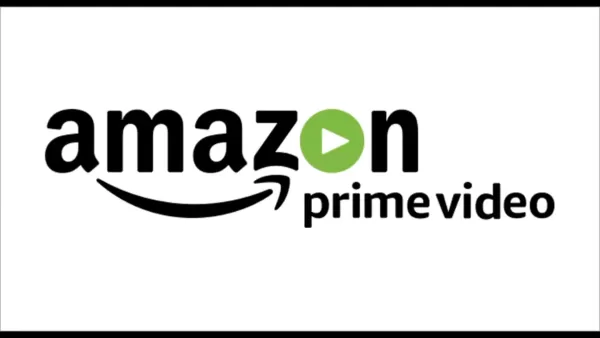 AI Shopping Agents: Revolutionizing the Future of E-Commerce Automation
The Revolution of Online Shopping with AIImagine a world where your shopping is handled by a smart AI agent, transforming your online shopping experience into something seamless and personalized. These AI shopping agents are not just a futuristic concept; they're poised to change how we buy things o
AI Shopping Agents: Revolutionizing the Future of E-Commerce Automation
The Revolution of Online Shopping with AIImagine a world where your shopping is handled by a smart AI agent, transforming your online shopping experience into something seamless and personalized. These AI shopping agents are not just a futuristic concept; they're poised to change how we buy things o
 Amazon's AI Video Model Now Capable of Generating Minutes-Long Clips
Amazon's latest AI video model, Nova Reel, has just gotten an exciting upgrade. Announced back in December 2024, Nova Reel marked Amazon's entry into the bustling world of generative video technology. Now, with the release of Nova Reel 1.1, the model can generate videos up to two minutes long, putti
Amazon's AI Video Model Now Capable of Generating Minutes-Long Clips
Amazon's latest AI video model, Nova Reel, has just gotten an exciting upgrade. Announced back in December 2024, Nova Reel marked Amazon's entry into the bustling world of generative video technology. Now, with the release of Nova Reel 1.1, the model can generate videos up to two minutes long, putti
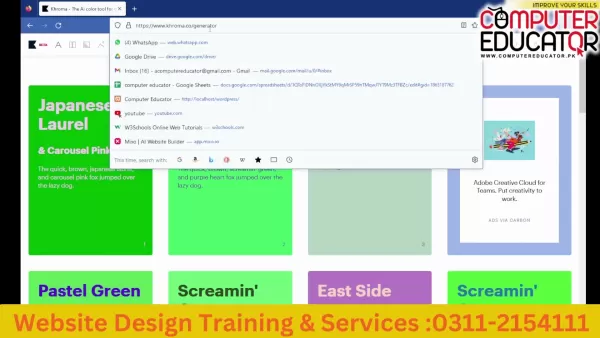 Khroma AI: Easily Create Beautiful Color Palettes for Design Projects
Choosing the perfect color palette for your design project can feel like a monumental challenge. Designers often find themselves lost in a sea of colors, trying to find that one combination that truly speaks to their creative vision. Thankfully, tools like Khroma AI are changing the game, making col
Khroma AI: Easily Create Beautiful Color Palettes for Design Projects
Choosing the perfect color palette for your design project can feel like a monumental challenge. Designers often find themselves lost in a sea of colors, trying to find that one combination that truly speaks to their creative vision. Thankfully, tools like Khroma AI are changing the game, making col
